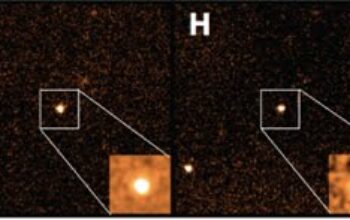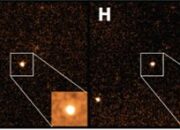In the realm of computational prowess, few pursuits capture the human imagination quite like the calculation of π (pi). This transcendental number, representing the ratio of a circle’s circumference to its diameter, extends infinitely without repeating, challenging mathematicians and enthusiasts alike for millennia. The advent of quantum computing, a paradigm shift that harnesses the peculiarities of quantum mechanics, prompts an intriguing inquiry: can a quantum computer ultimately uncover all the digits of pi? This question unveils not only the capabilities of quantum algorithms but also compels us to re-evaluate our understanding of both Computation and Mathematics.
To embark on this intellectual journey, we must first elucidate the foundational concepts of pi and its relation to computational methods. π possesses an infinite series of non-repeating digits, traditionally calculated through various algorithms such as the Bailey-Borwein-Plouffe (BBP) formula or the Gauss-Legendre algorithm. These classical approaches, despite their efficiency, are inherently constrained by the limitations of classical computing. Classical computers utilize bits, which exist in distinct states of 0 or 1. In contrast, quantum computers exploit qubits, which can exist in a superposition of states, enabling them to process an extraordinary amount of information simultaneously.
In exploring the computational capabilities of quantum systems, one must comprehend the implications of superposition and entanglement. Superposition allows a qubit to represent two values at once, thereby exponentially increasing computational capacity. This characteristic is particularly advantageous in tackling problems characterized by vast solution spaces, such as the calculation of π, where traditional methods can become increasingly tedious and time-consuming.
Moreover, quantum entanglement—the phenomenon where qubits become interdependent such that the state of one instantly influences the state of another, regardless of distance—constitutes another layer of complexity and capability. Such interdependencies can enhance the efficacy of quantum algorithms, potentially enabling solutions to problems that were previously deemed intractable, including the quest for the digits of π.
Enter Shor’s algorithm, a cornerstone of quantum computing that revolutionizes the approach to discrete factorization. Albert Einstein once mused, “Everything should be made as simple as possible, but no simpler.” In applying this philosophical undercurrent, Shor’s algorithm simplifies the primordial challenge of factoring large integers into prime constituents—an endeavor fundamental to current cryptographic systems. However, while Shor’s algorithm excels in factoring, it indirectly fuels curiosity regarding its implications for calculating π when paired with effective quantum algorithms.
One emerging quantum algorithm of notable interest is the Quantum Phase Estimation (QPE). QPE, emblematic of the quantum advantage, offers an unprecedented means of calculating the eigenvalues of unitary operators. Herein lies the potential to compute increasingly complex numerical representations of π with elevated precision. By adapting such methodologies to the persistent challenge of identifying pi’s digits, researchers may glean insights into efficient computational pathways that circumvent classical limitations.
However, it would be an oversimplification to assert that quantum computers can merely find all digits of π. This is deeply entangled with the nature of infinity itself. To assert that one could fully enumerate all digits of this perennial constant is, in itself, a paradox. The very essence of π defies termination. Thus, while quantum computers promise accelerated calculation and unprecedented precision, they will perhaps not “find” all digits of pi in the literal sense, but instead distill them through means not yet conceivable.
It is where this philosophical contemplation melds with computational mathematics that one begins to appreciate the broader implications of this inquiry. The underlying complexity inherent in π unveils fundamental inquiries about the nature of our universe. The digits of π hold relationships to physical constants and the structure of space-time, intricately connecting mathematics and physics. A deeper understanding of how quantum computing interacts with such constants can illuminate not only the methodical approach to our numerical pursuits but also the very fabric of reality itself.
Despite the myriad of advantages presented by quantum computing, it is crucial to recognize the existing barriers to practical implementation. Current quantum computers, often in their nascent stages, encounter limitations such as qubit coherence time and error rates that degrade computational fidelity. Channeling the full potential of quantum algorithms for calculating π requires advancements in quantum architecture and error correction techniques. These technological obstacles present an ongoing challenge for researchers, yet they invigorate the exploration of what lies ahead in the evolution of computation.
In summary, the question of whether a quantum computer can find all the digits of π invites a multifaceted exploration of computation and its philosophical implications. Quantum mechanics offers a tantalizing glimpse into a future where complexity can be wrestled into simplicity, challenging our perceptions of numerical pursuits. While the full realization of a quantum computer capable of fully calculating π remains an elusive goal—caught between the bounds of infinity and the constraints of current technology—the journey itself enriches our scientific dialogue. The pursuit stirs curiosity, igniting a passion for both the mysteries of mathematics and the possibilities that quantum computing can reveal in deciphering the cosmos. Ultimately, as quantum computing advances, perhaps π will evolve from an infinite enigma into a landmark of discovery, beckoning humanity to recalibrate our understanding of number, computation, and existence.










